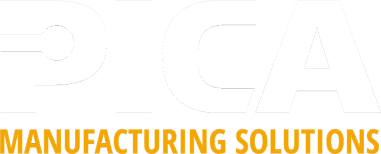Note: with serious and intentional regard for our customer’s privacy, we do not mention the name of the customer in the case study.
The Customer:
The customer in this case study is a leading company in the healthcare technology sector, known for its groundbreaking work in developing cutting-edge imaging technology. As an industry leader, they are constantly seeking to enhance the performance and reliability of their equipment to meet the rigorous demands of medical diagnostics. They approached this project with a specific and complex challenge that required a highly innovative and technical solution.

The Challenge:
The challenge presented by the customer was multifaceted and required a nuanced approach. They needed to design an electronic device that could flexibly bend around various diameters without compromising functionality. The device consisted of a complex 14-layer rigid flex substrate with impedance controlled traces. Furthermore, the assembled substrate with components was expected to withstand up to 2 million bend cycles, a requirement far exceeding the capabilities of traditional flex interconnects between printed circuit boards, which typically showed defects between 2,000 to 3,000 bend cycles.
The PICA Solution:
In response to this intricate challenge, PICA proposed a rigid flex printed circuit board (PCB) substrate solution, effectively eliminating the need for interconnects between the printed circuit board and flex circuit. This innovative approach initially faced hurdles; the first build with traditional shielding materials resulted in excessive thickness in the flex region, limiting the bend cycles to 10,000 before defects appeared. To overcome this, PICA modified the flex regions by incorporating a shielding film for impedance control and strategically relocating the copper to the neutral axis. This adjustment significantly reduced the thickness of the flex region while maintaining the required signal integrity.
The Result:
The implementation of the rigid flex PCB assemblies by PICA marked a significant breakthrough in the customer’s product development. This solution not only met but exceeded the electrical and mechanical bending requirements set by the customer. The device’s enhanced flexibility and durability, capable of enduring extensive bend cycles without degradation, represented a major advancement in the reliability and efficiency of medical imaging technology. This case study exemplifies how innovative engineering solutions can effectively address complex challenges in highly specialized industries, leading to substantial improvements in product performance and reliability.
Contact us with any questions on rigid flex PCB design and our capabilities as a rigid flex PCB manufacturer. We look forward to hearing from you and your design needs.
